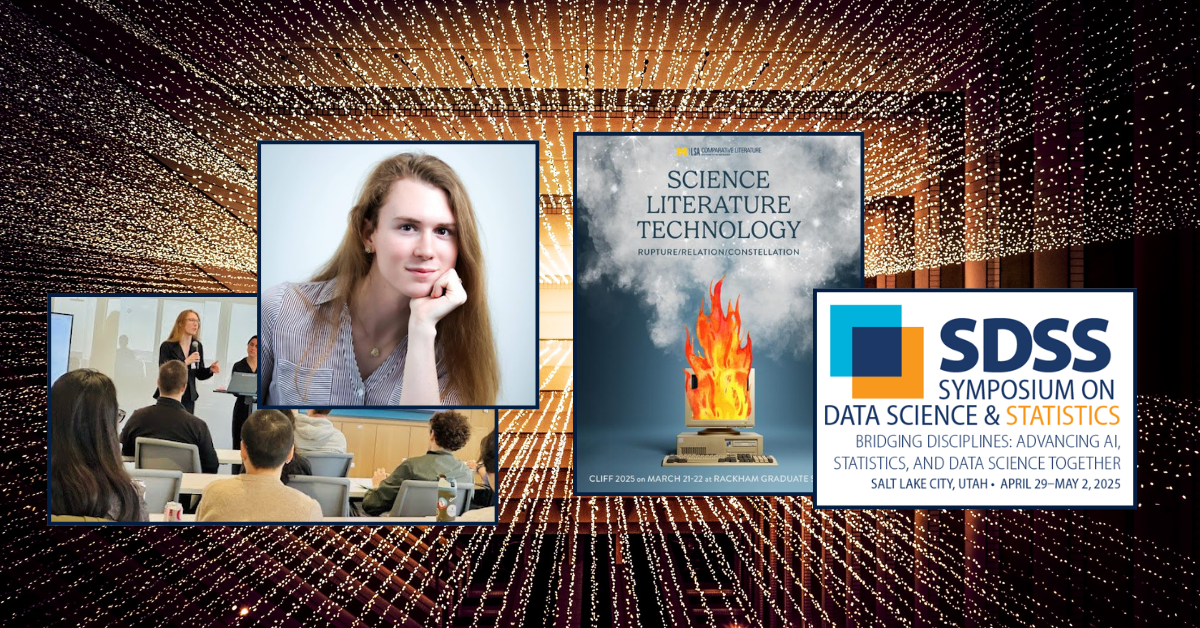Student Perspective: Breaking Barriers on the Research Conference Circuit
By Trey Roark (MS’26)
This semester, I had the opportunity to be invited to two conferences to present my personal research: The Lumpen Variable: Reimagining Queerness in Machine Learning. Through gearing up for publications and a Ph.D. track in mind, I continue to share my research across the country in hopes of making more ethical, context-sensitive metrics of fairness.
The first was the Comparative Literature Intra-Student Faculty Forum (CLIFF 2025). CLIFF 2025 took place at Rackham Graduate School at the University of Michigan, Ann Arbor. This conference, comprising a couple of hundred PhD and Master’s students in a variety of disciplines such as Sociology, Philosophy, and Comparative Literature, is made up of several sessions. Students and faculty alike present on their current research, personal findings, and dissertations, followed by a panel. This panel encouraged discussion among everyone to participate in scholarship generation.
The conference was a refreshing take on STEM research. As the only student from a STEM field attending; presenting and getting inquiries on the theoretical backing and foundation of my research revealed how grounded our data science research is in sociological and philosophical literature. My scholarship, dealing with causal inference, is based on philosophical thought, and thus, requires careful consideration that many objective scientists are too nervous to comment on. My presentation, regarding marginalized representations in machine learning modeling, fit nicely with the themes of science, technology, and the future of artificial intelligence. I got to learn so much about others’ research and discuss dimensions of my own as well.
The second conference, towards the end of the 2025 Spring semester, was the Symposium on Data Science and Statistics (SDSS 2025) in Salt Lake City, Utah. This was a five-day intensive gathering with longer sessions and significantly more networking. With an approximately 25%-75% split among students-to-professional ratio, respectively, it was a more science and STEM-focused conference that had me hesitant to propose alternative methodologies to fairness that included subjectivities. As such, it was a stark contrast to the CLIFF conference.
Through my approximately 45-minute presentation, I found curiosity and a hunger for deeper reflection on sociological representation in the data science community. Many questions I received regarded the sociotechnical dimensions of machine learning and how institutional marginalization is currently misrepresented as noise. This was followed by an enticing conversation of the philosophical grounding where causal inference meets queer theory. This conference reified the more objective grounding my research has in our fairness metrics and allowed for radically ethical scholarship in high-tech spaces.
As I continue to develop this work, these conferences remind me of the power of interdisciplinary dialogue and reaffirm my personal mission of building historically aware, context-sensitive tools for fairness construction in the current scheme of machine learning and artificial intelligence. Whether in Ann Arbor or Salt Lake City, queerness has a space in the room, and in our models.
